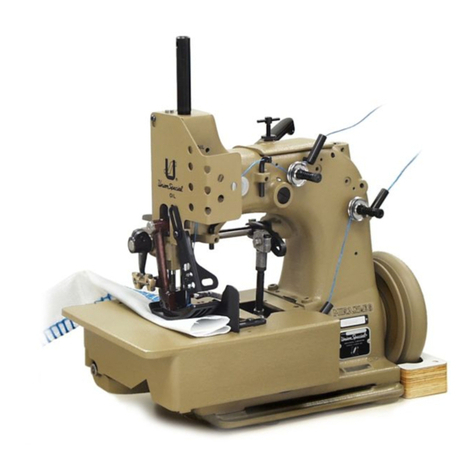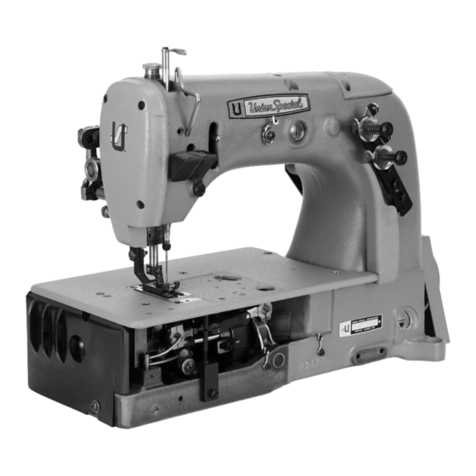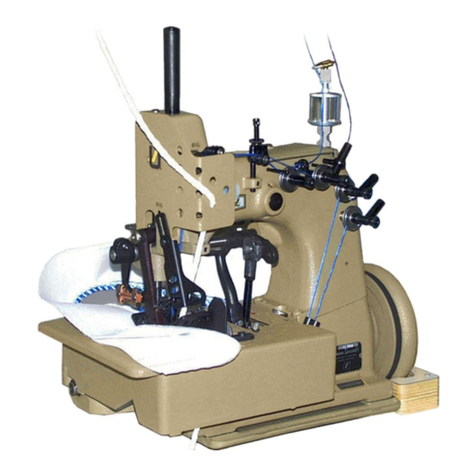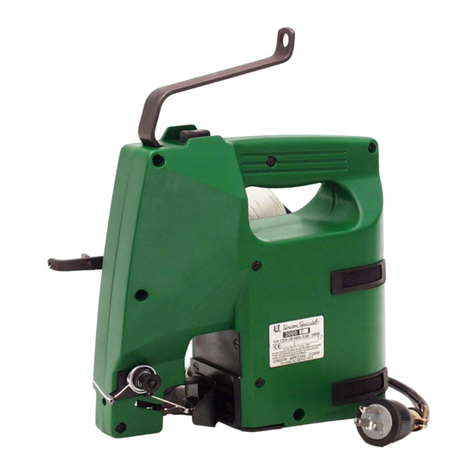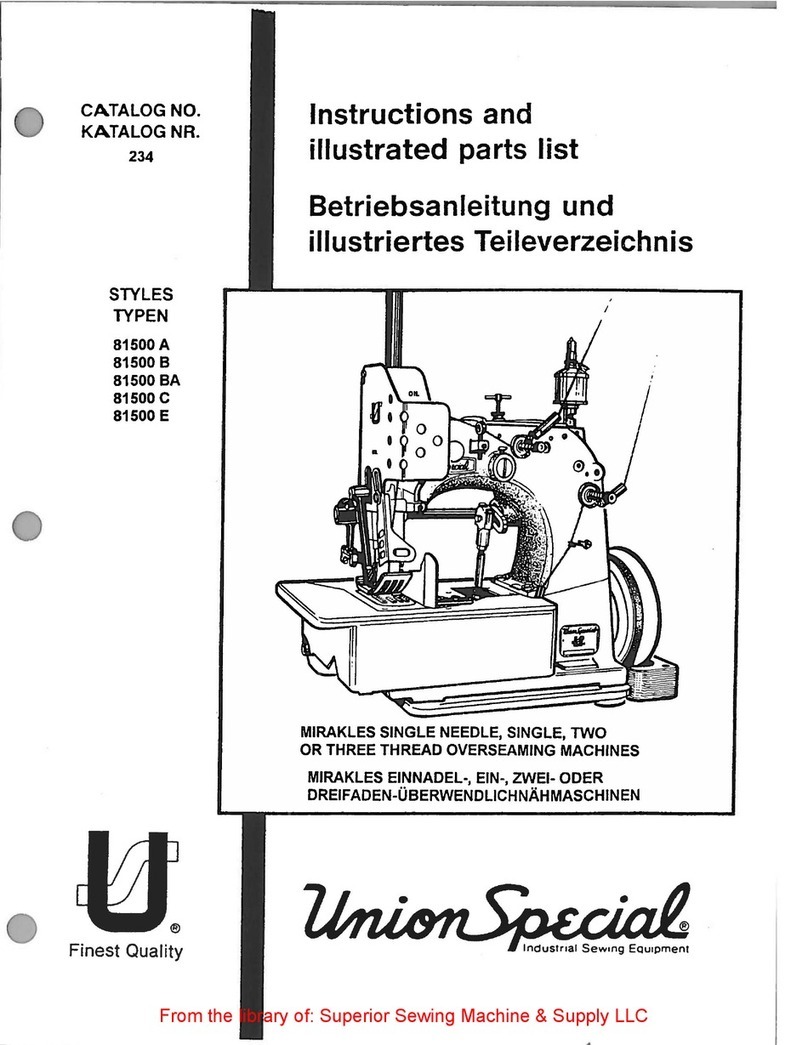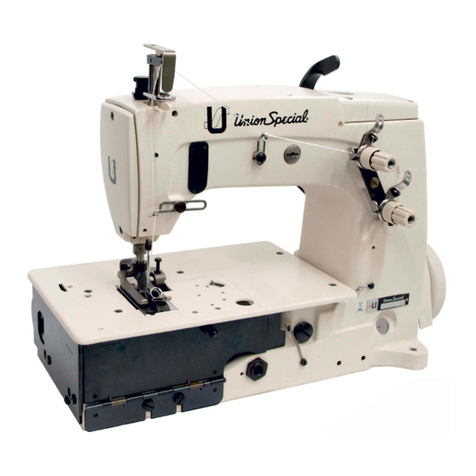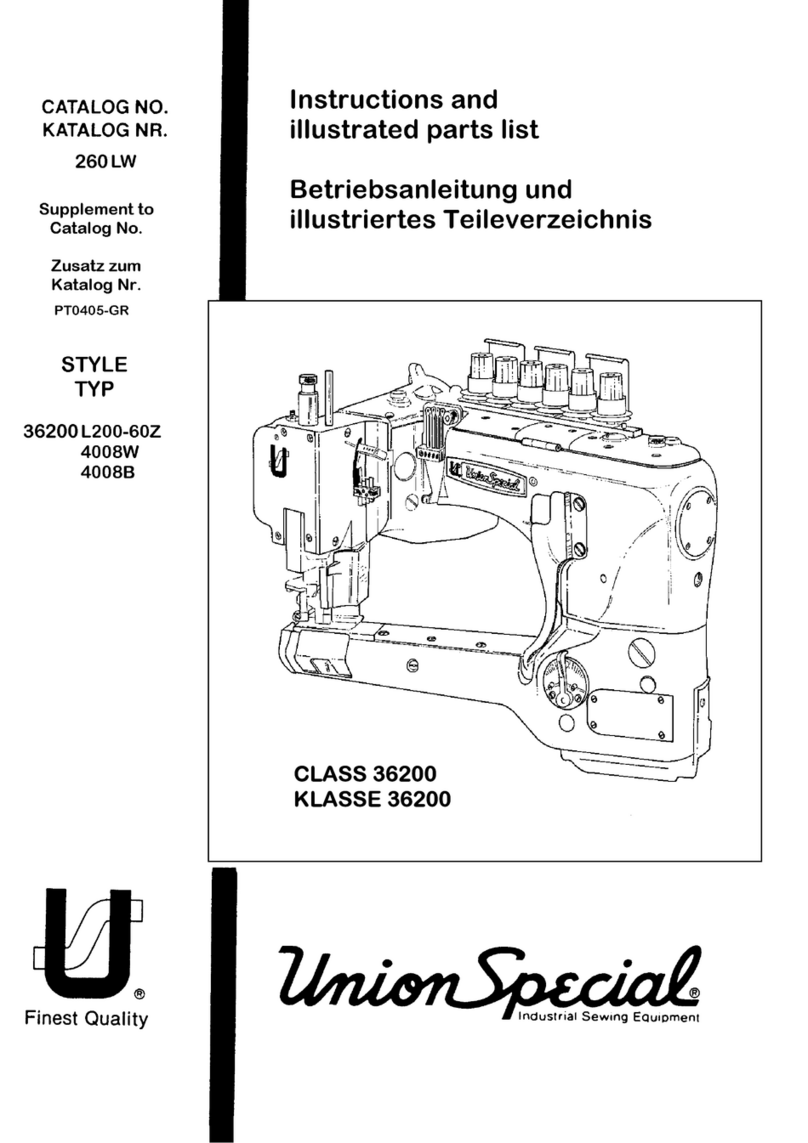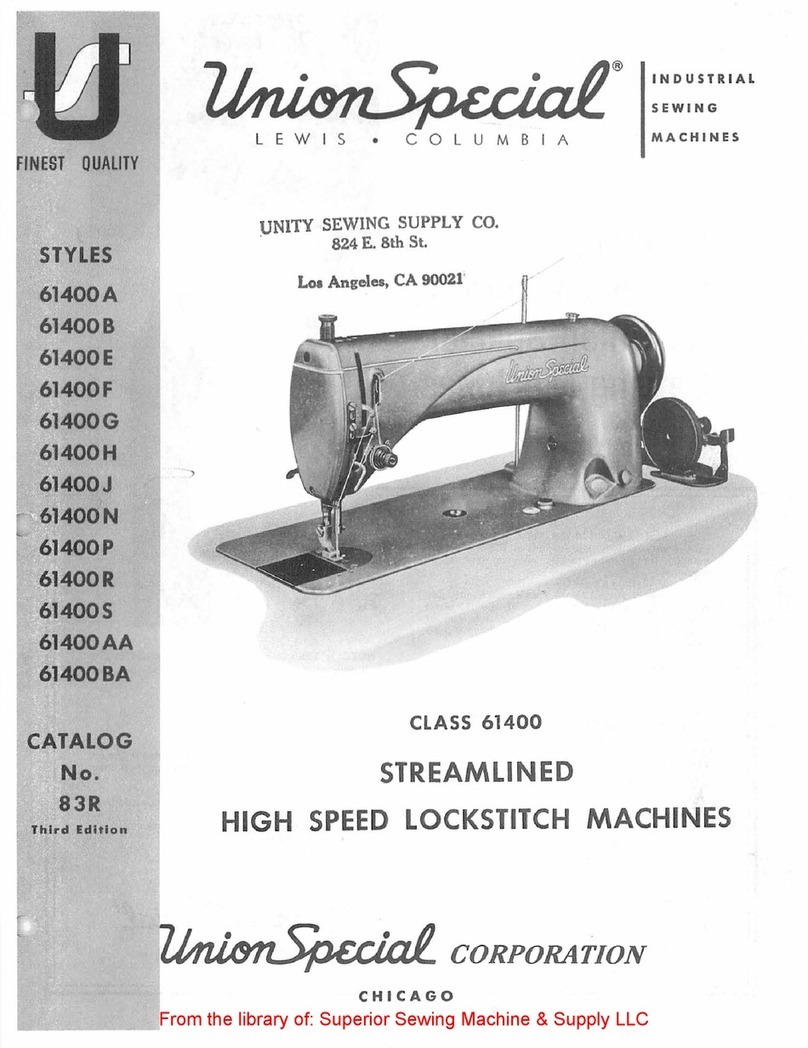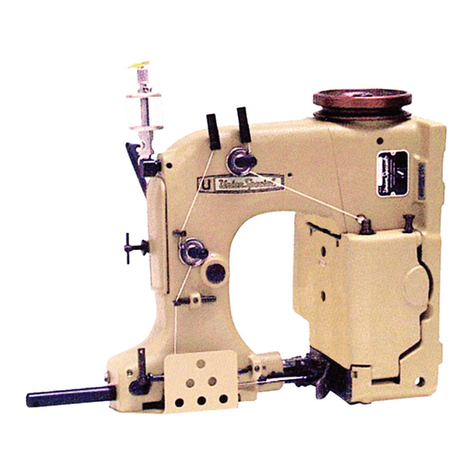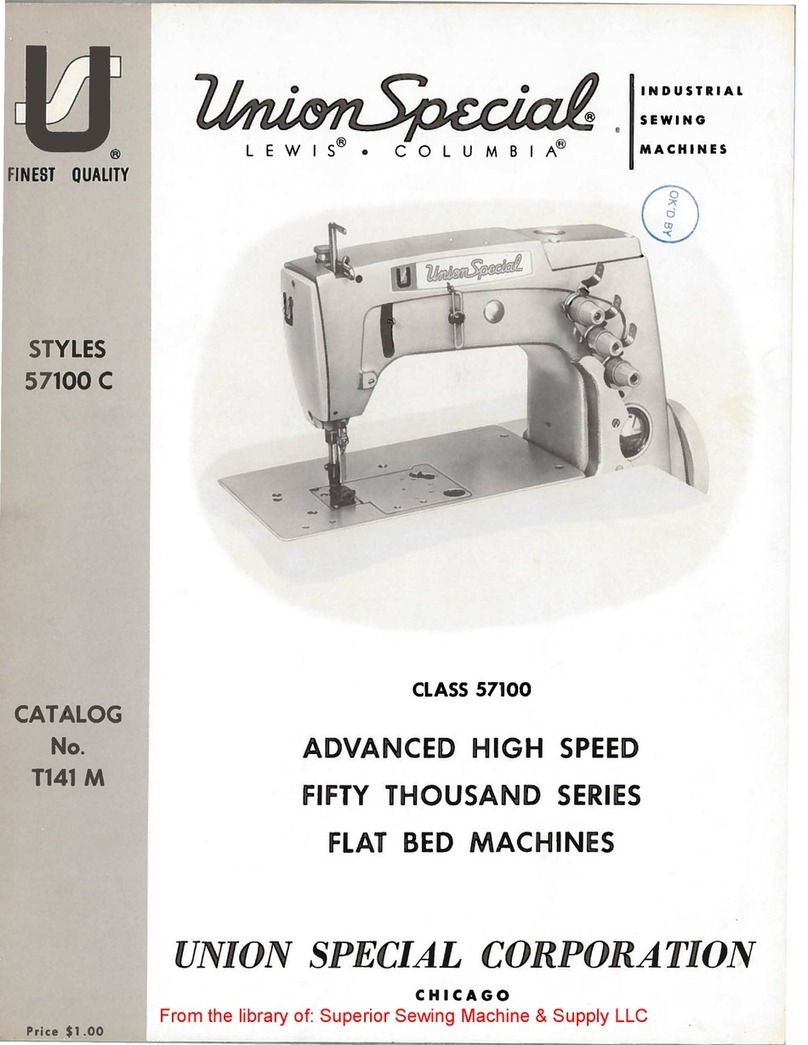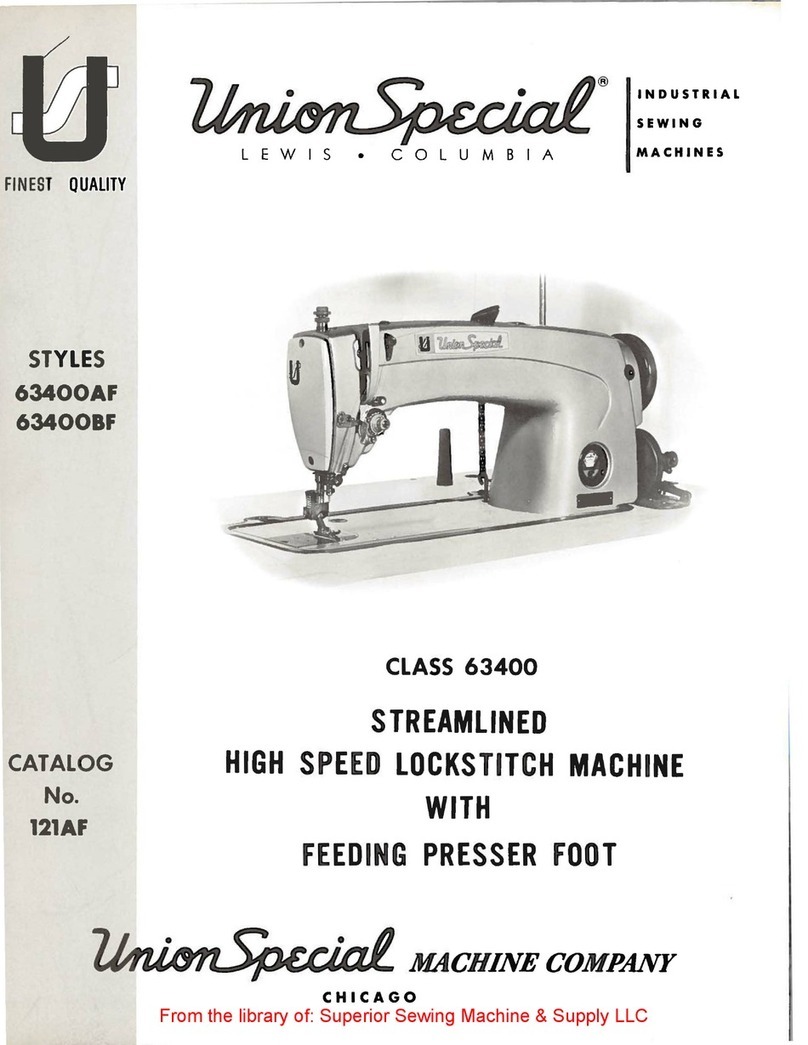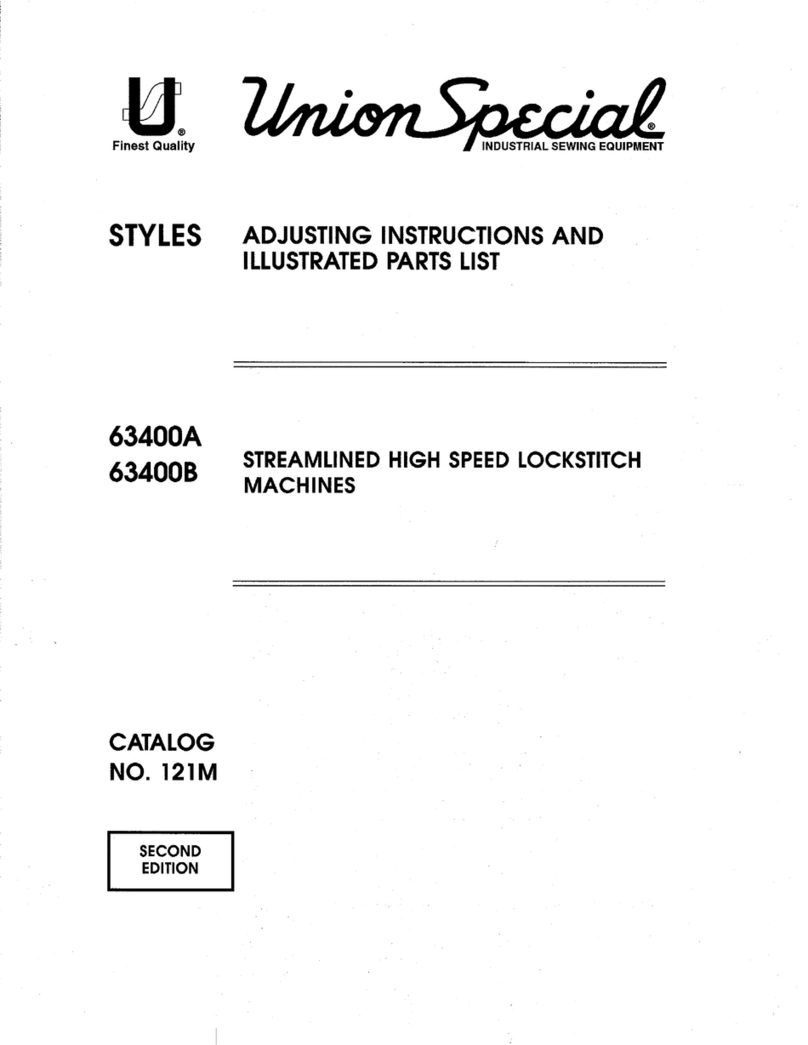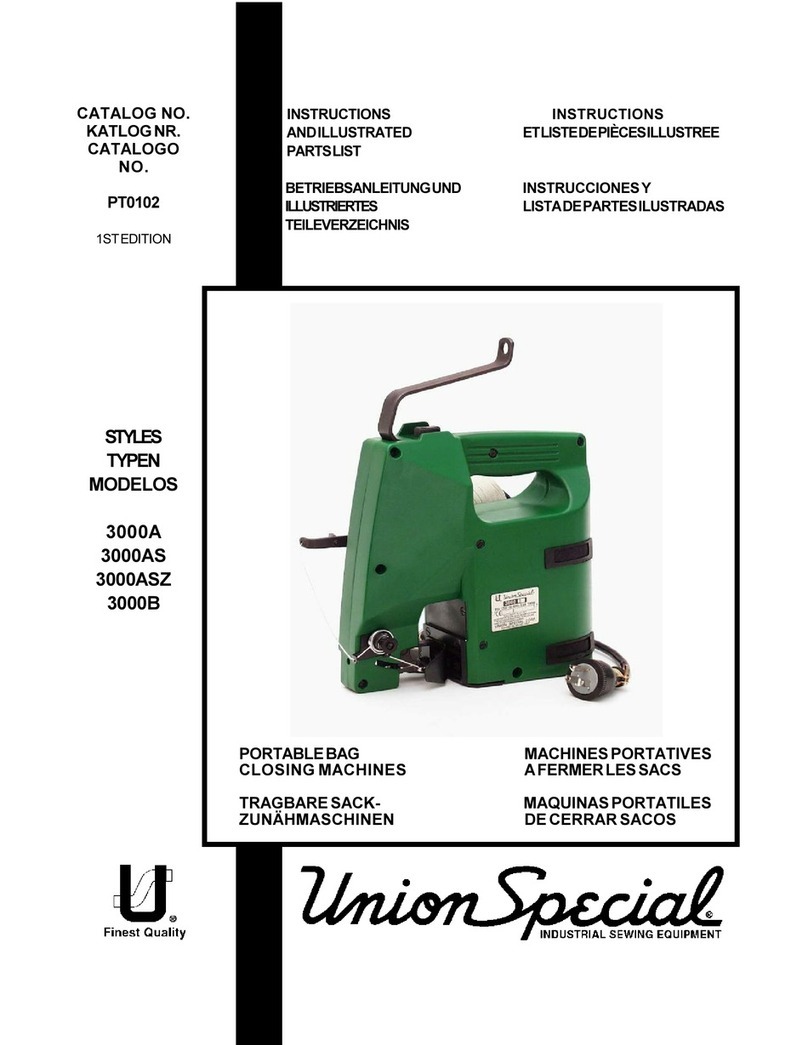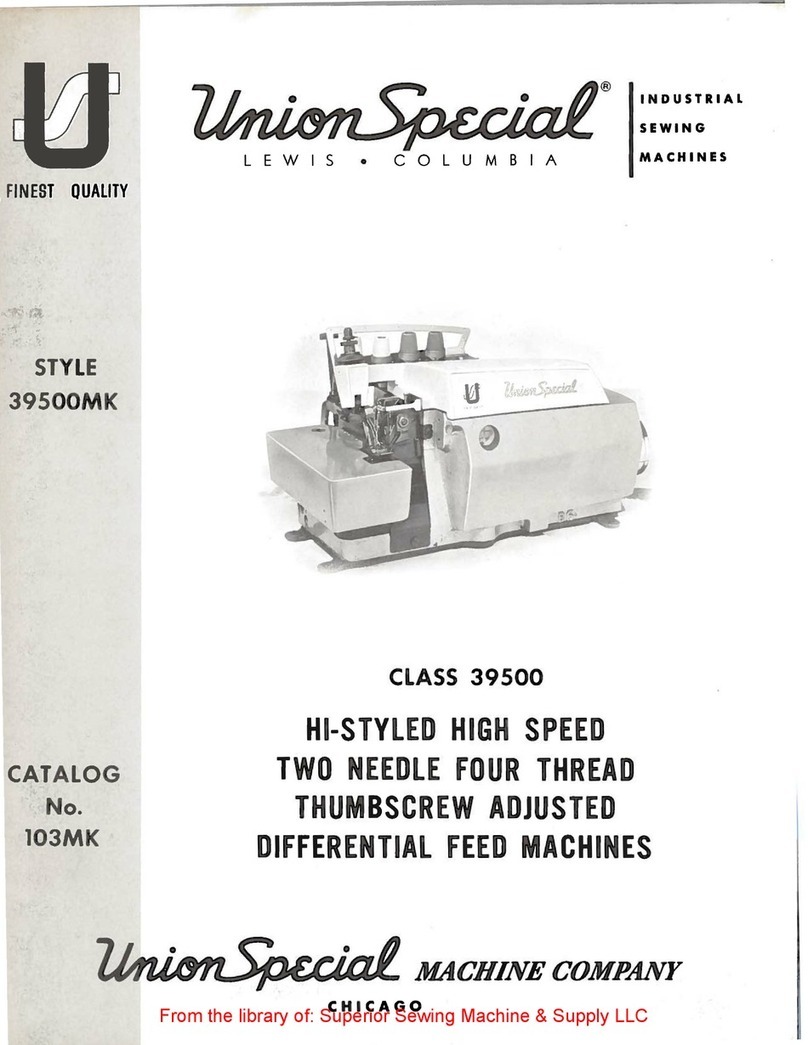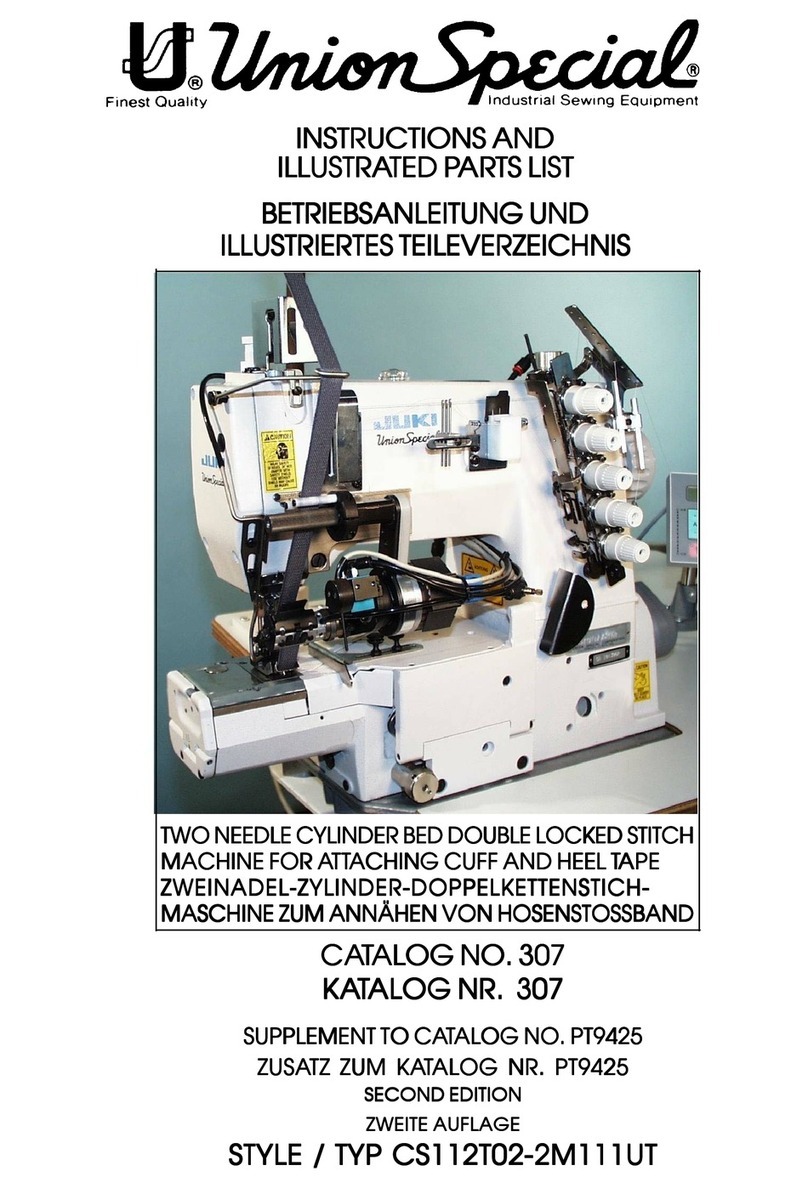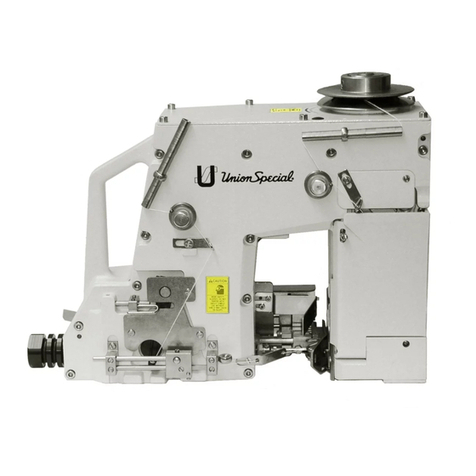
5
c) Avoid accidental operation of the machine. Make sure the machine is switched o before con-
necting the mains and/or the accumulator, picking up or carrying the machine. If your nger is on
the switch while connecting the mains this may lead to accidents.
d) Avoid unusual positions. Make sure you are standing secure and always keep your balance. It
makes it easier to control the sewing machine in unexpected situations.
e) Wear suitable clothes. Do not wear wide clothing or jewellery. Keep hair, clothes and gloves away
from moving parts. Loose clothes, jewellery and long hair may be caught in moving parts.
4. Application and handling the sewing machine
a) Do not operate the sewing machine above capacity:
S3 40%.
Duty: S3: 40% according to ISO 34-1/DIN VDE 0530.
The relative operation duration may not exceed a duration of 40%, related to a cycle of 10 minutes.
b) Do not operated a sewing machine with a defective switch. A sewing machine which cannot be
switched on or o is dangerous and has to be repaired.
c) Disconnect the mains resp. disconnect the pressure supply and/or remove the accumulator be-
fore performing maintenance, i.e. threading needle and looper, exchangeing sewing tools, such as
needle, presser foot, throat plate, looper, feed dog, needle guard, folder, guide etc. or at the end of
operation. These preventive measures protect you against involontarily starting the sewing machine.
d) Store inattended sewing machines out of reach of children. Do not allow unskilled persons to
operate the sewing machine, who have not read the instructions. Sewing machines are dangerous,
when operated by inexperienced persons.
e) Take good care of the sewing machine. Check the function of moving parts by turning the
handwheel, check for jammed, broken or damaged parts interfering with the working condition of
the machine. Have the damaged parts repaired before operating the machine. Many accidents are
caused by poorly maintenanced machines.
f) Keep the thread chain cutter sharp and clean. Diligently maintenanced knives with sharp cutting edges
jam less and cut longer.
g) Apply the sewing machine according to these instructions. Consider the working conditions and
the work to be performed. The use of the sewing machine for other operations than the intended use
may lead to dangerous situations.
h) On operational and on machines in operation all safety gadgets have to be in place. Operating the ma-
chine without the relevant safety measures is prohibited.
i) Modications and changes on the machine may only be performed observing the valid safety in-
structions. Modications and alterations are performed at your own risk.
k) Before eecting maintenance and repair on the pneumatic components the machine has to be
disconnected from the pressure supply. If the machine is still under pressure after disconnecting the
pressure tank, the machine has to be bled. Exceptions are only permissible for skilled personnel when
performing adjustments and function tests.
